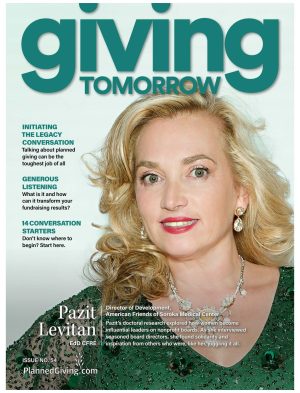It’s no understatement that the purpose of many nonprofits is to solve the world’s most urgent and challenging questions, often with the fewest resources. Issues like hunger, economic development, poverty, addiction, affordable housing, animal neglect, education, environmental hazards and more are often the core of our organizations’ purpose.
But when your cause is so big and complex, how do you discuss it with an audience experiencing a shrinking attention span and more charitable causes to support than ever? Ask yourself a few questions to help your nonprofit stay focused and strategic when communicating your vital mission.
1. Do I have an effective mission statement?
Almost every nonprofit maintains a mission statement to summarize the basic purpose and goals of their organization. A mission statement typically describes what you do and who you serve within a few sentences.
Below is international nonprofit Heifer International’s mission statement:
The mission of Heifer International is to end hunger and poverty while caring for the Earth. Heifer does this by providing appropriate livestock, training and related services to small-scale farmers and communities worldwide.
This is a useful mission statement because it immediately identifies the charitable purpose of this organization: to end hunger and poverty while caring for the Earth. A donor immediately knows if this nonprofit’s values resonate with them.
Heifer International follows this up with practical examples of their everyday work: providing appropriate livestock, training and related services to small-scale farmers and communities worldwide. These details build intrigue and trust with donors and show that this nonprofit has a focused strategy.
2. Do I have a proper vision statement?
Many funding opportunities will ask for both a mission and vision statement. These two summaries differ because a vision statement focuses primarily on the nonprofit’s aspirational view of the future.
A vision statement is often much shorter than a mission statement. Your vision can be lofty but it should be honest and provide clear focus for future activity.
Below is the vision statement for Teach for America:
One day, all children in this nation will have the opportunity to attain an excellent education.
This is a useful vision statement because it clearly communicates the long-term commitment this organization has to its cause. While clearly aspirational, this vision statement distills Teach for America’s goal into a few key words: all children and excellent education. If this cause matters to you, this powerful vision statement invites you to dream alongside the nonprofit.
3. What is my case for support?
While a mission and vision statement is useful for letterhead, grant applications, and a website landing page, your case for support often seals the deal for donations.
Your nonprofit should use a case for support for every individual fundraising campaign, including major gifts and planned giving efforts. A case for support narrows the focus of your organization even further to describe how a donor’s gifts will elevate a specific need, like a capital campaign to fund the construction of a new building.
An effective case for support must include:
- Wider context of the fundraising need (state or local statistics)
- A thorough description of how this campaign meets that need
- Transparent accounting to explain how you arrived at the campaign goal amount
4. What does our audience say?
Take the time to listen to your targeted audiences and see what their perspective is on your organization. It’s vital to understand how board members, volunteers, staff members, and even the people you serve understand and share your mission. Word of mouth is a powerful tool, so it’s vital for organizations to know how to wield this successfully.
Consider developing a survey you can email to key constituents, asking them questions like:
- How do you explain our organization’s work?
- What are the most important aspects of our organization’s efforts?
- What does our organization value?*
*For this question you can provide some keywords to choose from or rank. Include both fundraising sectors like education, environment, and health as well as words like community, trust, youth, fundraising, or prominence.
Perhaps the best case scenario for nonprofits is for their various audiences to incorporate parts of their mission or vision statements in their summaries. Or maybe a fresh voice will reveal new ways for you to express the cause.
If you find your audience is struggling to communicate what makes your organization valuable or they are straying from the mission statement, examine where this breakdown may be. This may be the inspiration needed to make necessary tweaks to foundational aspects of your organization, like the mission statement.
5. How do I summarize our mission?
Don’t forget to check in with yourself when pondering the difficulty of communicating the purpose of your own work. What resonates the most with you when sharing what you do with others?
Use the tried-and-true journalistic technique of The 5 W’s and H to begin this introspection. Who do we serve? How is this done? Why???
It’s important to complete this self-assessment so you can gauge your answers against those in your audience. See where you diverge and analyze if you are clinging to a perception of what the nonprofit could or should be, instead of how it is realistically resonating in your community.
Conclusion
Nearly every nonprofit (except maybe those that work with kids or kittens) feels like their cause can be too complicated to contain within a mission statement or other elevator speech-like mechanism. But this reaction may be the first step to realizing your nonprofit’s mission is not as clear as you once thought. Ask yourself and key constituents a few vital questions and examine tools like your mission statement and case for support to clarify your organization’s vision.






